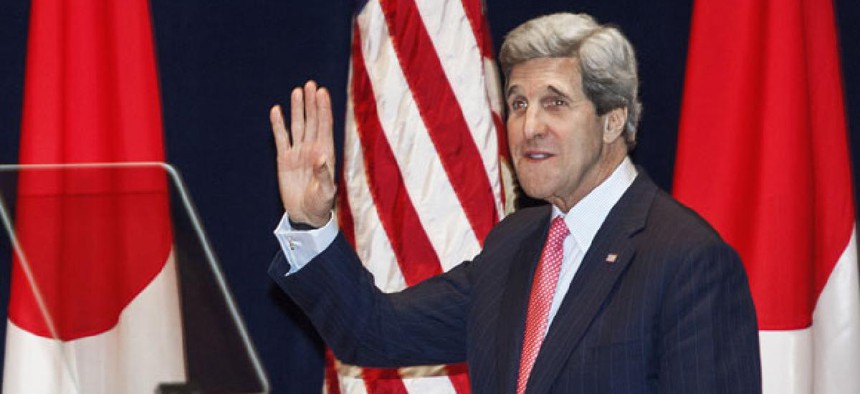
John Kerry visited Japan Monday. Paul J. Richards/AP
What Exactly Does It Mean That the U.S. Is Pivoting to Asia?
Kerry trips show that the Obama Administration wants to re-balance foreign policy toward Asian powers.
More than ten weeks after his confirmation as the new United States Secretary of State, John Kerry finally went to Asia. The former Massachusetts senator stopped in South Korea, Japan, and China over the busy weekend, the first time an American Secretary of State visited all three nations in the same trip. Kerry's visit also coincided with the escalating crisis on the Korean Peninsula, a subject of increasing concern for Washington.
NEXT STORY: Union Calls on Pentagon to Eliminate Furloughs






